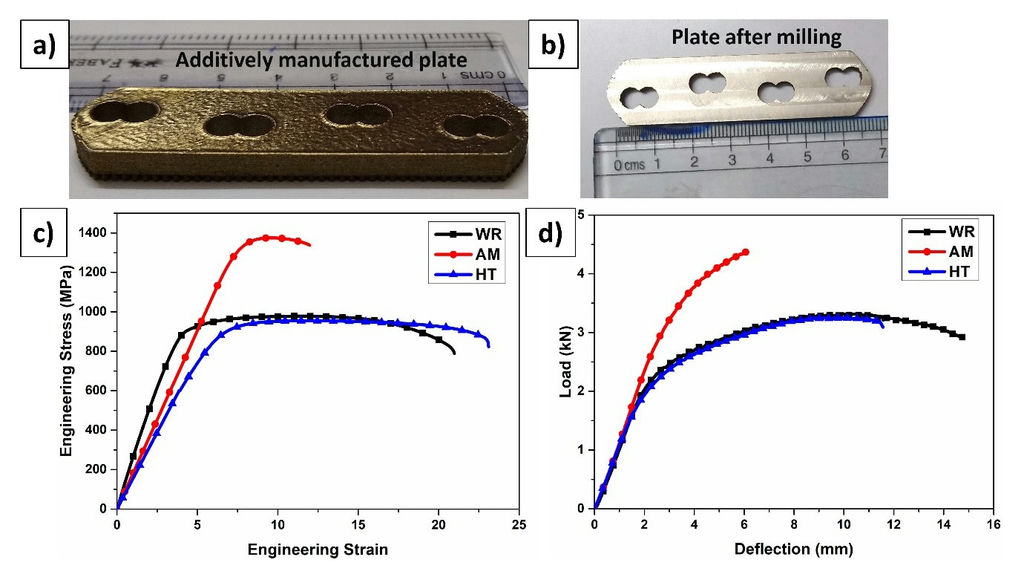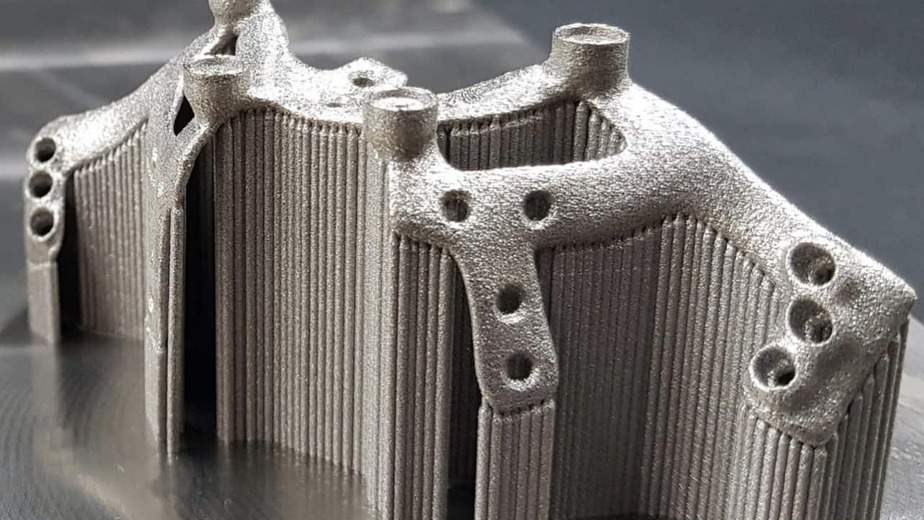The article discuses about innovative heat treatment used by researchers at IISC to transform martensitic microstructure of Ti-6Al-4V into a bimodal microstructure. The manufacturing method was SLM followed by innovative heat treatment. The results indicated improvement in ductility and performance comparable to conventionally manufactured medical devices.
Additive manufacturing (AM) is a layer-by-layer fabrication process in which thin layers are deposited over a substrate progressively to build a three-dimensional (3D) object. Metal AM processes are grouped into two categories based on ASTM standards: powder bed fusion and directed energy deposition. Laser powder bed fusion/ selective laser melting (SLM) has emerged as a mature technology with the availability of manufacturing units from several suppliers. The fabrication of dense parts necessitates optimization of the processing parameters, such as laser power, laser speed, hatch spacing, powder layer thickness, etc. Our research group at the Indian Institute of Science (IISc) is actively working on additive manufacturing of several metallic biomaterials, including SLM of popular biomedical alloys such as Ti-6Al-4V, SS316, and Co-26Cr-8Mo, and wire arc additive manufacturing of Zn, which is recognized as an emerging class of resorbable metallic biomaterials.
The team have extensively studied the effect of processing parameters on fabricated alloys by characterizing the porosity, residual stress, mechanical behavior, and crystallographic texture. It is well known in the AM community that additively manufactured parts must be subject to stress relieving treatment for the release of residual stress to minimize warping of the fabricated components after wire cutting. Another critical challenge associated with several fabricated components, particularly of Ti6Al4V, is their mechanical performance. This limitation arises because the microstructure of the additively manufactured part is different from its cast and wrought counterparts. The cooling rate in AM is very high as compared to conventional arc melting resulting in altered microstructures. This difference has motivated researchers globally to work towards optimized heat treatments and surface engineering strategies for the parts produced by AM to alter bulk and surface microstructure for enhanced performance. This article describes our activities on AM Ti-6Al-4V and its successful clinical translation.
In the research work conducted by IISc, the team fabricated near-net-shape bone plates by SLM of Ti-6Al-4V powder. The resultant parts exhibited martensitic microstructure, which results in poor ductility, thereby limiting the application for components. To address this challenge, an innovative heat treatment based on repeated heating and cooling below but close to the β-transus was applied to bone plates after fabrication. This heat treatment resulted in the transformation of the martensitic microstructure into a bimodal microstructure. three-point bend test and tensile test performed on the heat-treated plates revealed a large improvement in ductility, and the results were comparable to plates that were conventionally manufactured from wrought alloy. The design of the bone plate used in the study and its mechanical behavior is shown in Fig.1. The corrosion behavior and cytocompatibility of all the plates were similar. Thus, this heat treatment enables us to additively manufacture Ti6Al4V orthopedic parts to achieve biomechanical performance comparable to conventionally manufactured medical devices.

This technology is now being applied for the treatment of malunions of the arm. In collaboration with orthopedic surgeons at the Sanjay Gandhi Institute Of Trauma and Orthopaedics, our group at IISc is designing and fabricating patient-specific bone plates for defects in the distal humerus, radius, and ulna bones, followed by heat treatment prior to implantation. A patient with above mentioned clinical deformity was treated with additively manufactured Ti-6Al-4V alloy, as shown in Fig.2. The use of these additively manufactured implants results in reduced surgery time and nearly full restoration of the functionality in the upper limb of the patient post-surgery in contrast to the conventional mass-produced implants, as assessed by the surgeon. Malunions are common in India, where patients receive inadequate healthcare resulting in loss of hand function. The emergence of additive manufacturing can, thus, open new avenues for improved healthcare through patient-specific implants leading to a better quality of life for the patients.

Authors
Saurabh Kumar Gupta1*, Satya Vamsi Krishna2, Satyam Suwas1, Kaushik Chatterjee1
1Department of Materials Engineering, Indian Institute of Science, Bangalore, India
1Sanjay Gandhi Institute Of Trauma and Orthopaedics, Bangalore, India
* For more information: [email protected]
Subscribe to AM Chronicle Newsletter to stay connected: https://bit.ly/3fBZ1mP
Follow us on LinkedIn: https://bit.ly/3IjhrFq
Visit for more interesting content on additive manufacturing: https://amchronicle.com


